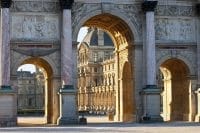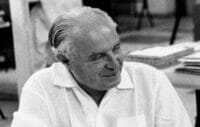
Rococo Style: How it Distincts in Architecture, Furnishings and Painting
Rococo Style: Birth and Development The Rococo, as a reflection of the trends, tastes and way of life of France…
1600
97 x 74
Roman School, second half of the 17th century
Composition with lemons and puppy
Oil on canvas, 97,5 x 74,5 cm
With frame, 120 x 95 cm
The work we describe here can be placed in the style of still life that flourished in Rome during the seventeenth century, involving both Italian and foreign artists, especially French and Flemish, who came to the city in search of rich commissions and artistic novelties to learn in order to increase their skills. The names that come closest to this work are those of Pier Francesco Cittadini (1616-1681) and Francesco Noletti, known as the Maltese but for a long time also known as Fieravino (1611-1654). The first, originally from Milan and the second from Malta, both found themselves working in the city, where they tried their hand at the still life genre, obtaining great success both in terms of commissions and in terms of followers and imitators. Cittadini had also previously had other experiences: a pupil of Daniele Crespi in Milan first and of Guido Reni in Bologna later, he approached still life with greater determination only once he arrived in Rome, where he had the opportunity to meet the French artists who practiced this particular genre. More focused and purified from other genres, Noletti, who arrived directly in Rome from the small island of Malta, which earned him the nickname "the Maltese", immediately stood out, even among the Nordic artists as demonstrated by the engravings of Jacques Coelemans and the reproductions of Jacques Hupin, for the high lenticular quality of his works, in particular in the rendering of the fabrics of the Turkish carpets that constantly appear in his canvases, similar to the one placed haphazardly on the raised surface. Continuing with the similarities we find the presence of the metal tray with fruit, apples and lemons, but above all of the metal vase at the foot of the scene; these elements capable of enhancing the reflections of light in the dark setting are typical in Noletti's still lifes while the presence of the dog or, in general, of an animal element is rare, which instead we find in many works by Cittadini. The space behind is not particularly bright but appears open through an arch that frames a corner of cloudy sky; this breath towards the open as well as the same description of the architectural elements that surround the room are also elements that appear somewhat absent in the production of the Maltese artist, but which are found in Cittadini: an example is the canvas preserved in the Galleria Nazionale di Arte Antica in Trieste, or that of the Galleria Estense in Modena, where we can also detect the animal presence in the cat that attacks the cage containing a bird.

Rococo Style: Birth and Development The Rococo, as a reflection of the trends, tastes and way of life of France…

The Empire style, with its magnificent fusion of majesty and grace, remains an icon of classic furnishings, exerting a timeless charm…

Giò Ponti is one of the artists who most dominated the Italian post-war period, acting as a spokesperson for important innovations in the world…
have viewed this article in the last 30 minutes.